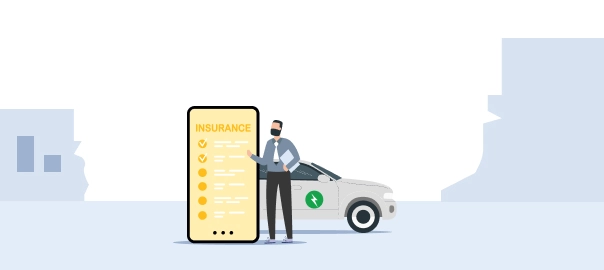In today’s fast-paced world, owning a car is a necessity for many. It offers freedom, convenience, and access to opportunities. However, along with the pleasure of driving comes the responsibility of car insurance, a mandatory requirement in most places. The challenge for most drivers isn’t if they should buy insurance, but rather how to find affordable car insurance that genuinely fits their budget without compromising on essential coverage.
This comprehensive guide will walk you through the strategies, factors, and secrets to unlocking significant savings on your car insurance premium. We’ll show you how to navigate the marketplace, identify the best deals, and keep your hard-earned money in your wallet.
Understanding the Cost: What Drives Your Premium?
Before diving into savings tips, it’s crucial to understand the variables insurance companies use to calculate your premium. This knowledge is the first step toward effective cost management:
- Your Driving Record: This is arguably the most significant factor. A clean record—free of accidents, tickets, and moving violations—is rewarded with lower rates.
- The Car You Drive: The make, model, year, safety ratings, and the cost of repairs heavily influence the premium. Expensive, high-performance, or frequently stolen vehicles cost more to insure.
- Your Location: Where you live (state, city, even zip code) matters. Areas with high traffic density, high crime rates, or extreme weather conditions typically result in higher premiums.
- Demographics: Age, gender (in some states), marital status, and years of driving experience are factored in. Young, inexperienced drivers often face higher rates.
- Annual Mileage: The less you drive, the lower the risk of an accident, often leading to better rates.
- Credit Score (in most US states): Insurers use an insurance-specific credit score to predict the likelihood of you filing a claim. A better score generally means a lower premium.
- Coverage and Deductibles: The amount of coverage you choose (liability limits, comprehensive, collision) and the deductible you select directly impact the cost.
💰 Essential Strategies to Slash Your Insurance Bill
Finding the perfect policy on a budget requires a proactive approach. Here are the most effective strategies to lower your premium:
1. Shop Around and Compare Quotes
This is the single most important action you can take. Never settle for the first quote. Insurance companies use proprietary algorithms, meaning the exact same driver and car can receive vastly different quotes from different providers.
- Get Quotes Annually: Even if you’re happy with your current provider, compare quotes from at least three to five competitors every time your policy is up for renewal.
- Use Independent Agents: These agents can shop multiple carriers at once, saving you time and potentially uncovering local deals.
- Check Different Types of Insurers: Compare large national companies, local/regional insurers, and direct-to-consumer online providers.
2. Master the Power of the Deductible
Your deductible is the amount you agree to pay out-of-pocket before your insurance coverage kicks in for comprehensive and collision claims.
- Increase Your Deductible: If you raise your deductible from, say, $500 to $1,000, your premium can drop significantly—often by 15% to 40%. Just ensure you have the higher deductible amount saved and readily available in case you need to file a claim.
3. Review Your Coverage Needs (Especially for Older Cars)
Don’t pay for coverage you don’t need.
- Drop Comprehensive and Collision: If your car is older (typically 10+ years) and its market value is less than 10 times the annual cost of comprehensive and collision coverage, it might be smarter to drop these coverages. The money you save can be put into an emergency repair fund.
- Maximize Liability: While cutting costs is the goal, never skimp on liability coverage. This protects your assets if you are at fault in an accident. Opting for higher liability limits ($100k/$300k/$100k) is often a relatively small premium increase for massive protection.
4. Leverage All Available Discounts
Insurance companies offer dozens of discounts. Make sure you claim every single one you qualify for:
| Discount Category | Potential Savings | Description |
| Multi-Policy/Bundling | Up to 20% | Insuring your car and home/renter’s insurance with the same company. |
| Safe Driver/Good Driver | Up to 30% | Maintaining a clean driving record for 3-5 years. |
| Good Student | Up to 25% | Full-time students with a B average or better (often up to age 25). |
| Anti-Theft Device | Up to 15% | Having a car alarm, tracking system, or VIN etching. |
| Paid-in-Full | 5-10% | Paying the entire premium upfront instead of monthly installments. |
| Affinity/Group | Varies | Discounts for belonging to certain professional organizations, alumni groups, or employers. |
| Multi-Car | Varies | Insuring more than one vehicle on the same policy. |
5. Participate in Usage-Based Insurance (UBI) Programs
Many insurers now offer telematics programs (often a small plug-in device or a mobile app) that track your actual driving habits (speed, braking, mileage, time of day).
- How it Works: If the device confirms you are a safe, low-mileage driver, you can qualify for significant discounts. This is an excellent way for safe drivers to prove they are low-risk and get a better rate than their demographic might suggest.
🛠️ Long-Term Strategies for Lasting Savings
The true secret to affordable car insurance lies in managing the factors you can control over time.
6. Improve Your Driving Habits
The single best way to lower your premium is to avoid accidents and tickets. A single at-fault accident can raise your rate by hundreds of dollars for up to five years. Take a defensive driving course, which some companies reward with a premium discount.
7. Maintain a Good Credit Score
As noted, your insurance score is derived from your credit history. Paying bills on time, keeping credit card balances low, and limiting new lines of credit can all help improve your score, which in turn can lead to lower insurance premiums.
8. Choose Your Next Car Wisely
When it’s time to purchase a new vehicle, research its insurance costs before signing the papers.
- Prioritize Safety: Vehicles with high safety ratings (low chance of severe injury) often cost less to insure because the insurer is less likely to pay out large medical claims.
- Avoid High-Theft Targets: Check lists of frequently stolen cars, as these are inherently more expensive to cover.
- Mid-Range is Best: Stick to reliable, mid-range sedans or SUVs. Avoid models that are known for high repair costs or performance cars, which are deemed higher risk.
A Note on Budgeting vs. Skimping
While finding the most affordable policy is the goal, it’s vital to distinguish between smart budgeting and dangerous cost-cutting.
Warning: Never buy only the state-mandated minimum liability coverage. In a serious accident, minimum coverage will likely not be enough to cover the other party’s medical bills and property damage. You could be sued for the difference, putting your personal savings and assets at risk. Affordable coverage should still be adequate coverage.
Conclusion
Finding affordable car insurance that fits your budget is an achievable goal, not a pipe dream. It requires a commitment to shopping around regularly, a willingness to adjust your deductible, and the smart habit of claiming all available discounts. By understanding the factors that influence your rate and implementing these proactive strategies, you can drive with peace of mind, knowing you are properly protected without overspending.
Start saving today: Get three competing quotes, review your current discounts, and find out how much you can truly afford to keep in your pocket.






